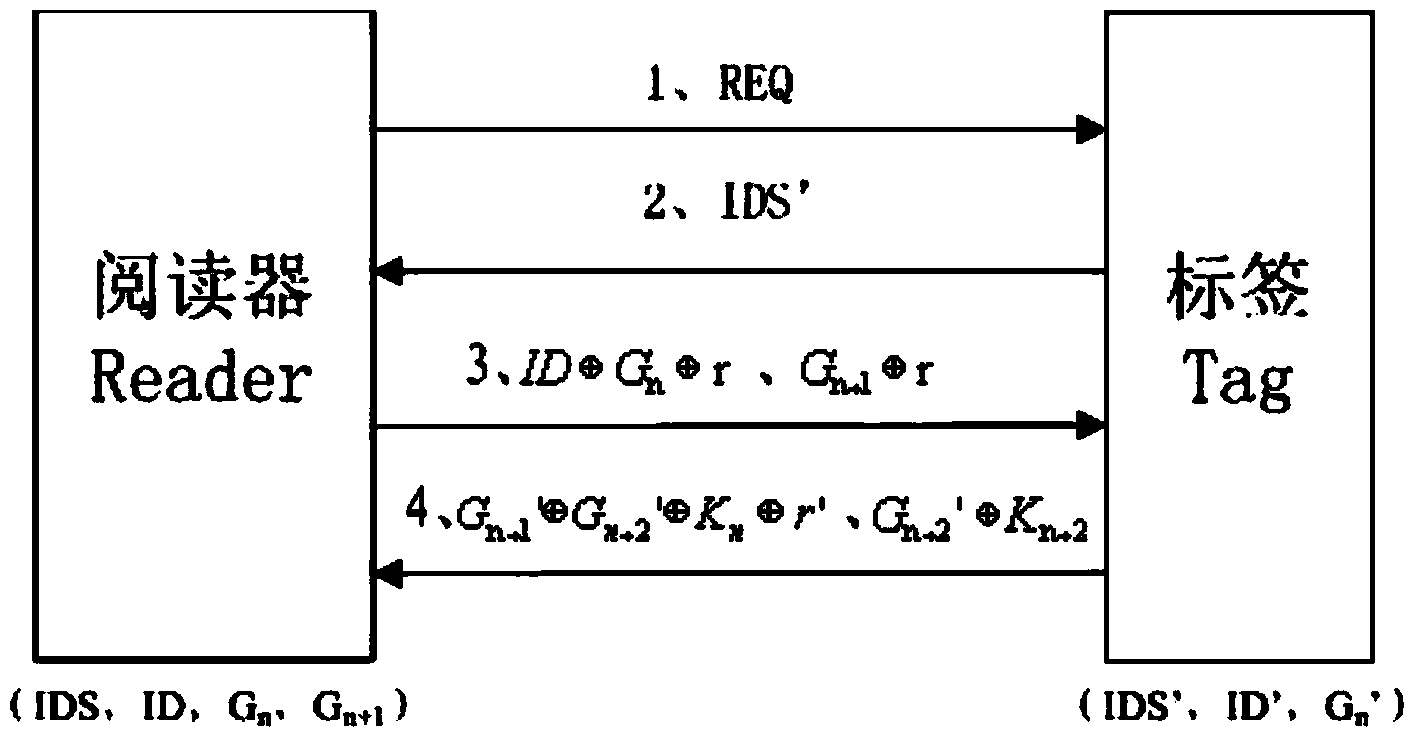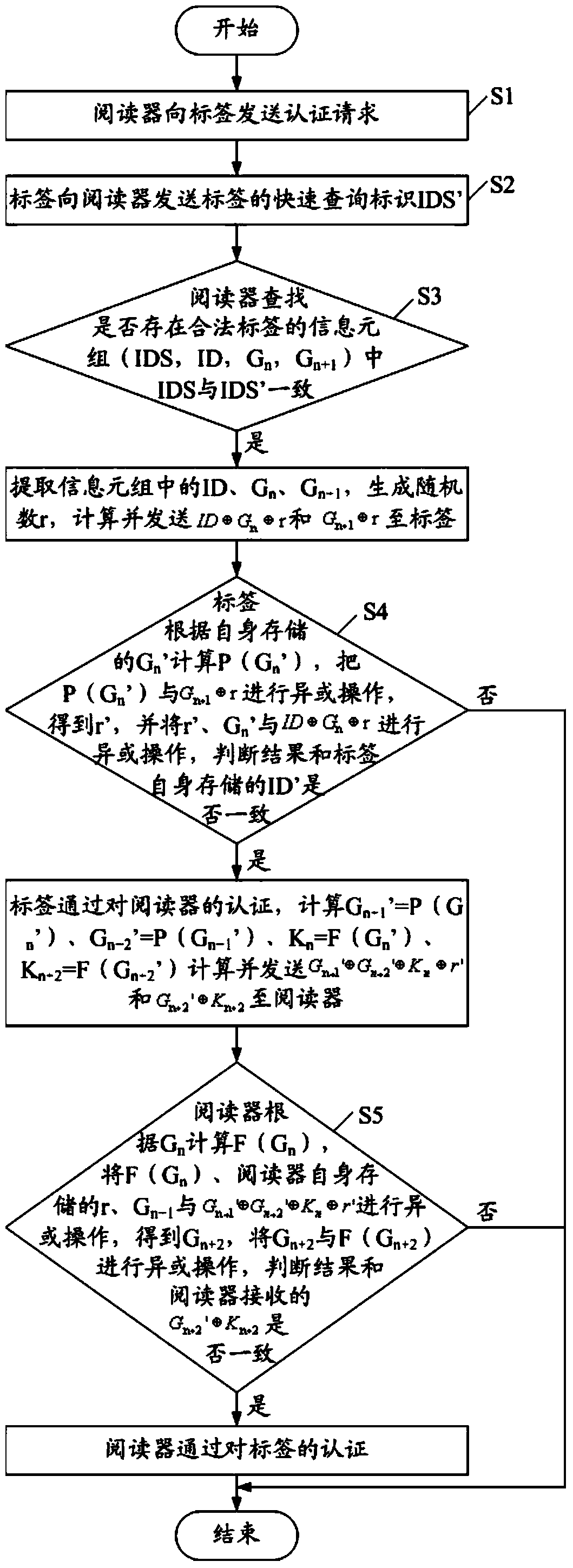Physical unclonability-based RFID lightweight class authentication method
A lightweight authentication and physical technology, applied in the field of communication, can solve the problems of privacy protection such as forward security, unable to resist replay attacks, large hardware requirements, etc., to achieve efficiency and security, low cost, and hardware requirements. small effect
- Summary
- Abstract
- Description
- Claims
- Application Information
AI Technical Summary
Problems solved by technology
Method used
Image
Examples
Embodiment Construction
[0023] In order to make the object, technical solution and advantages of the present invention clearer, the present invention will be further described in detail below in conjunction with the accompanying drawings.
[0024] Such as figure 1 and figure 2 As shown, the RFID lightweight authentication methods based on physical unclonability include:
[0025] S1: The reader sends an authentication request REQ to the tag.
[0026] S2: The tag receives the authentication request REQ, and sends the tag's quick query ID IDS' to the reader.
[0027] It should be noted that the tag stores its own information tuple (IDS', ID', G n ’), a tag corresponds to a unique information tuple; the information tuple (IDS, ID, G n , G n+1 ), one reader can correspond to information tuples of multiple legal tags.
[0028] At the same time, the PUF module P and LFSR module F are integrated in the tag, which can perform XOR operation. The same LFSR module F as the tag is integrated in the reader...
PUM
 Login to View More
Login to View More Abstract
Description
Claims
Application Information
 Login to View More
Login to View More - R&D
- Intellectual Property
- Life Sciences
- Materials
- Tech Scout
- Unparalleled Data Quality
- Higher Quality Content
- 60% Fewer Hallucinations
Browse by: Latest US Patents, China's latest patents, Technical Efficacy Thesaurus, Application Domain, Technology Topic, Popular Technical Reports.
© 2025 PatSnap. All rights reserved.Legal|Privacy policy|Modern Slavery Act Transparency Statement|Sitemap|About US| Contact US: help@patsnap.com


